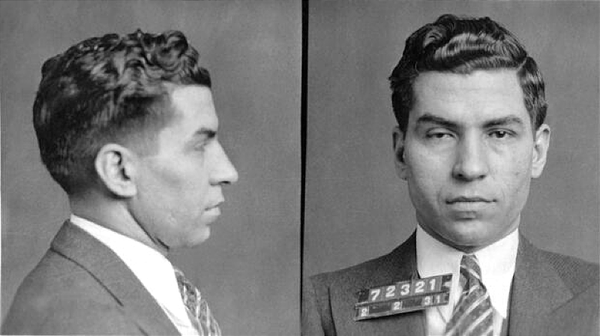Quantum physics experiment finds evidence of negative time

From Scientific American: "Quantum physicists are familiar with wonky, seemingly nonsensical phenomena: atoms and molecules sometimes act as particles, sometimes as waves; particles can be connected to one another by a “spooky action at a distance,” even over great distances; and quantum objects can detach themselves from their properties like the Cheshire Cat from Alice’s Adventures in Wonderland detaches itself from its grin. Now researchers led by Daniela Angulo of the University of Toronto have revealed another oddball quantum outcome: photons, wave-particles of light, can spend a negative amount of time zipping through a cloud of chilled atoms. In other words, photons can seem to exit a material before entering it."
How North Korea's Kim Jong-un assassinated his brother with a deadly nerve agent

From GQ: "When Kim Jong-nam was a boy, his father, the dictator of North Korea, sat him on his office chair and said, “When you grow up, this is where you'll sit and give orders.” If the child had fulfilled that promise—if his half brother, Kim Jong-un, had not ultimately usurped his throne—he would have tyrannized 25 million people. His pudgy finger would have caressed the launch buttons of nukes. America and China would have debated how to manage him. But as Jong-nam glanced up at the departures board in the international airport of Kuala Lumpur, Malaysia, the jostling crowd ignored him. He had become just another overweight 45-year-old, the bald spot that he usually hid with a cap showing through his remaining hair like a bull's-eye."
Hundred-year-old box of negatives discovered frozen in block of Antarctica ice

From Hasan Jasim: "While restoring one of the exploration huts in Antarctica, conservators of the New Zealand Antarctic Heritage Trust discovered a box that turned out to be a remarkable treasure. It contained 22 never-before-seen cellulose nitrate negatives documenting the life of Antarctic explorers a 100 years back. Preserved in a block of ice, these negatives surprisingly lived up to our days to shine a light on the Antarctic heroic era and the landscape itself. After being frozen for a century, the negatives had to be gently restored by firstly separating one from another, then cleaning, removing the mold and consolidating the cellulose nitrate image layers. Only after this painstaking process they were turned into digital positives. The box of photographs was probably left in Captain Scott’s hut by Ernest Shackleton’s 1914-1917 Ross Sea Party."
A bored intern created one of the most popular video games of all time

From The Verge: "Solitaire has been a staple for office distraction since Microsoft first included the game in Windows 3.0 in 1990. But the digital adaptation wasn’t made by an iconic coder or just one of the company’s many full-time employees. It was programmed by an intern. Wes Cherry, who was an intern at Microsoft in 1988. He describes the experience as “all-encompassing,” but even internships at Microsoft have lulls. He put the downtime to good use. “I came up with the idea to write Solitaire for Windows out of boredom, really,” Cherry said. “There weren’t many games at the time, so we had to make them.” Cherry’s game got an official blessing from Bill Gates himself, and it became a staple of Microsoft’s operating system. despite its long-standing success, Cherry said he was not paid a single cent. He’s since moved on from computer work to owning a cidery."
Pythagorean theorem found on clay tablet a thousand years older than Pythagoras

From IFLScience: "while Pythagoras was an important historical figure in the development of mathematics, he did not figure out the equation most associated with him (a2 + b2 = c2). In fact, there is an ancient Babylonian tablet (by the catchy name of IM 67118) that uses the Pythagorean theorem to solve the length of a diagonal inside a rectangle. The tablet, likely used for teaching, dates from 1770 BCE – centuries before Pythagoras was born in around 570 BCE. Another tablet from around 1800–1600 BCE has a square with labeled triangles inside. Translating the markings from base 60 – the counting system used by ancient Babylonians – showed that these mathematicians were aware of the Pythagorean theorem as well as other advanced mathematical concepts."
When you really want to say thank you
To everyone that follows me ❤️
— Science girl (@gunsnrosesgirl3) September 28, 2024
pic.twitter.com/TYiMHEUYZP
Acknowledgements: I find a lot of these links myself, but I also get some from other newsletters that I rely on as "serendipity engines," such as The Morning News from Rosecrans Baldwin and Andrew Womack, Jodi Ettenberg's Curious About Everything, Dan Lewis's Now I Know, Robert Cottrell and Caroline Crampton's The Browser, Clive Thompson's Linkfest, Noah Brier and Colin Nagy's Why Is This Interesting, Maria Popova's The Marginalian, Sheehan Quirke AKA The Cultural Tutor, the Smithsonian magazine, and JSTOR Daily. If you come across something interesting that you think should be included here, please feel free to email me at mathew @ mathewingram dot com



